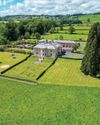
THE terrible demise of the Crooked House pub at Himley in the Black Country—distressingly alight, fire hollowed walls, flattened dune of bricks and all in fewer than 48 hours—is a reminder of the vulnerability of all kinds of old buildings. They are at risk of wear and tear, abandonment, unsuitable development and, sometimes, even ruthless intent. What was once a plain Georgian farmhouse was made famous by its chance location. Situated partly on top of coal deposits owned by the Earl of Dudley, the peculiar skewing of its structure was the result of the seams underneath being mined in the 19th century. Many have called for a compulsory brick-for-brick reinstatement of this architectural one-off and all its imperfections, much like the rebuilding of Charrington Brewery’s 1920s Carlton Tavern in Kilburn, London, which was unlawfully demolished in 2015 by developers, then reassembled in replica style using archived photographs and interior details documented by Historic England.
The potential for the accurate rehabilitation of any blaze-damaged or wrecked structure is dependent on its significance and community value, formal heritage status and statutory protections, documentary evidence, insurance and funding. However, not all agree with the principle of rebuilding and conservation philosophy has changed. Where the National Trust pursued the reinstatement— some might say pastiche—of Uppark House in West Sussex following a fire in 1989, they are now engaged in the preservation of the skeletal Clandon Park in Surrey as a ruin, an approach that avoids the resurrection of what could be deemed an aesthetic phoney.
この記事は Country Life UK の September 06, 2023 版に掲載されています。
7 日間の Magzter GOLD 無料トライアルを開始して、何千もの厳選されたプレミアム ストーリー、9,000 以上の雑誌や新聞にアクセスしてください。
すでに購読者です ? サインイン
この記事は Country Life UK の September 06, 2023 版に掲載されています。
7 日間の Magzter GOLD 無料トライアルを開始して、何千もの厳選されたプレミアム ストーリー、9,000 以上の雑誌や新聞にアクセスしてください。
すでに購読者です? サインイン

A trip down memory lane
IN contemplating the imminent approach of a rather large and unwanted birthday, I keep reminding myself of the time when birthdays were exciting: those landmark moments of becoming a teenager or an adult, of being allowed to drive, to vote or to buy a drink in a pub.

The lord of masterly rock
Charles Dance, fresh from donning Michelangelo’s smock for the BBC, discusses the role, the value of mentoring and why the Sistine chapel is like playing King Lear

The good, the bad and the ugly
With a passion for arguing and a sharp tongue to match his extraordinary genius, Michelangelo was both the enfant prodige and the enfant 'terribile’ of the Renaissance, as Michael Hall reveals

Ha-ha, tricked you!
Giving the impression of an endless vista, with 18th-century-style grandeur and the ability to keep pesky livestock off the roses, a ha-ha is a hugely desirable feature in any landscape. Just don't fall off

Seafood, spinach and asparagus puff-pastry cloud
Cut one sheet of pastry into a 25cm–30cm (10in–12in) circle. Place it on a parchment- lined baking tray and prick all over with a fork. Cut the remaining sheets of pastry to the same size, then cut inner circles so you are left with rings of about 5cm (2½in) width and three circles.

Small, but mighty
To avoid the mass-market cruise-ship circuit means downsizing and going remote—which is exactly what these new small ships and off-the-beaten track itineraries have in common.

Sharp practice
Pruning roses in winter has become the norm, but why do we do it–and should we? Charles Quest-Ritson explains the reasoning underpinning this horticultural habit

Flour power
LONDON LIFE contributors and friends of the magazine reveal where to find the capital's best baked goods

Still rollin' along
John Niven cruises in the wake of Mark Twain up the great Mississippi river of the American South

The legacy Charles Cruft and Crufts
ACKNOWLEDGED as the ‘prince of showmen’ by the late-19th-century world of dog fanciers and, later, as ‘the Napoleon of dog shows’, Charles Cruft (1852–1938) had a phenomenal capacity for hard graft and, importantly, a mind for marketing—he understood consumer behaviour and he knew how to weaponise ‘the hype’.